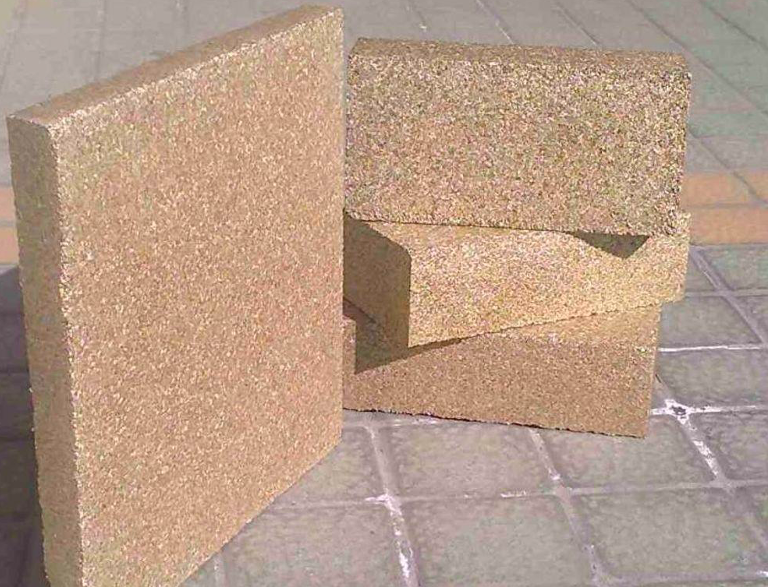We can say about vermiculite that it is a calcined mica based on aluminosilicates. It is obtained from the natural mineral of the same name, which goes through several stages of processing, including calcination. Thanks to this, a mixture of small fraction granules is obtained, which are distinguished by heat-insulating, sound-proofing and other useful properties described in the article.
The content of the article
- What is vermiculite
- Properties and scope of vermiculite
- The use of vermiculite in construction
What is vermiculite
One of the most common minerals in nature is aluminosilicates. These include vermiculite, the basis of which are:
- aluminum;
- magnesium;
- iron;
- water (in a chemically bound state).
We can say that vermiculite is a soft mineral of various colors. It usually has a brownish-yellow color. Basalt rocks are mined in nature and fired in kilns, similar to brick production technology. Then it is crushed into small fractions from 0.6 to 5 mm.
You can understand what vermiculite is from the presented photo. From left to right, samples of different fractions are presented from largest to smallest. In fact, it is a free-flowing mixture of fairly small particles. The density of the material is from 100 to 200 kg per m3. Depending on this, 3 brands are distinguished:
- M-100 corresponds to a density index of 100 kg per m3;
- M-150 - vermiculite of moderate density 150 kg per m3;
- M-200 is the most dense material, the indicator corresponds to 200 kg per m3.

Properties and scope of vermiculite
We can say about vermiculite that it is a natural raw material, on the basis of which the material of the same name is produced, which has the following properties:
- environmentally friendly, safe composition;
- low thermal conductivity;
- fire resistance;
- sound absorption;
- high covering power;
- low coefficient of expansion when heated;
- resistance to weathering processes;
- high moisture capacity (absorbs water).
Based on this, it is easy to understand what vermiculite is for, and in what areas it is used:
- metal production;
- energy;
- automobile production (in brake pads);
- in the manufacture of paper;
- for growing plants (maintaining moisture, loose soil structure);
- there is an option how to use vermiculite in animal husbandry - it is used as an additional component of animal and bird feed;
- production of electrodes.

The use of vermiculite in construction
If we talk about what vermiculite is for, we can separately highlight its use in construction. Powder is used for a variety of purposes:
- fire protection for a metal frame;
- embankment for a warm floor;
- screed component.
- vermiculite, the photo of which is presented above, is used as part of plaster and other mixtures;
- production of partitions with heat-resistant properties;
- in chimneys (bulk material between the outer and inner surfaces of the pipe).
What vermiculite is made of determines its most important properties. The material is fire resistant, helping to protect structures and surfaces from fire. In addition, vermiculite contains aluminosilicates, which do not conduct heat well. Therefore, such material is used for thermal insulation. Since it is quite dense, the mixture is also used for soundproofing.
As a rule, we are talking about expanded granules that undergo additional processing (long-term calcination) during production. The material is porous, free-flowing, due to which the described properties of vermiculite appear.
Moreover, it is used not only in the form of a mixture, but also a plate. Such products protect reinforced concrete, steel, wooden structures, as well as cable routes from fire. They are also used for the construction of stoves and fireplaces.

Thus, the mineral vermiculite is used in a variety of fields. The largest volumes go to construction needs. Also, quite often, the mixture is used in the cultivation of plants and as feed for animals and birds.


